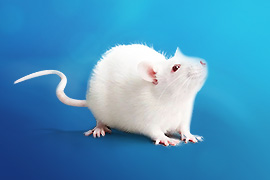Note: The prices in the following figure are official prices for 2023. For details, please consult the responsible manager in each region.
|
Category |
Service Item |
Deion |
Remarks |
|
Made Slice Anterior Site Processing |
Paraffin Embedding |
Fixed tissues were taken according to customer requirements, dehydrated, and ded into wax blocks (imported paraffin). |
Dehydrated and ded in one block. |
|
Softened (skin). |
Softening treatment for relatively hard tissues. |
One specimen was softened. |
|
|
Superhard softening (bamboo and other particularly hard plants) |
Superhard tissue softening treatment, with a cycle of more than 3 months |
Softening of one specimen |
|
|
Decalcification of bone tissue with EDTA (small) |
Decalcification of zebrafish, nude mouse bone, and mouse bone within 14 days |
Decalcification of 1 specimen |
|
|
Decalcification of bone tissue with EDTA (medium) |
Decalcification of larger tissues such as rat femur, tibia, joint, smaller teeth, or rabbit bone without trimming requiring a larger container |
Decalcification of 1 specimen |
|
|
Decalcification of bone tissue with EDTA (large) |
Decalcification of one specimen |
||
|
Paraffin section |
Tissue-protecting paraffin section |
One paraffin section |
|
|
Preparation of frozen tissue |
Tissue fixed with 4% paraformaldehyde or fresh tissue ded in OCT |
Frozen ding and pre-processing |
|
Category |
Service items |
Deion |
Note |
|
Staining |
HE staining |
Hematoxylin-eosin staining method, observing tissue morphology |
Staining with slices |
|
Frozen HE staining |
Hematoxylin-eosin staining, observing tissue morphology |
Staining with frozen sections |
|
|
Oil red O staining |
4% paraformaldehyde fixation, frozen sectioning. Lipids within the organization (such as lipid droplets) |
Stained with slices |
|
|
Sudan Black B staining |
Fixed with 4% paraformaldehyde and frozen sections Lipids within the organization (such as lipid droplets) |
Stained with slices |
|
|
Hematoxylin and eosin staining |
Commonly used for plant and cartilage tissue morphology staining |
Stained with slices |
|
|
Masson's staining |
Observation of differentiation between organization fibrosis and muscle fibers, and degree of organization fibrosis |
Staining with section |
|
|
Sirius Red staining |
Observation of degree of organization fibrosis, and partitioning of collagen subtypes using polarized light (orthogonal light belongs to fluorescence photography) |
Staining with section |
|
|
Gram staining |
Observing bacterial morphology and identifying bacteria have certain reference value in selecting drugs; Gram-positive bacteria can produce exotoxins, while Gram-negative bacteria can produce endotoxins. |
Staining with slices |
|
|
PAS glycogen staining |
Observing changes in glycogen in tissues such as liver and muscle; changes in acidic mucus substances in goblet cells of intestines, stomach, lungs, and bronchi. |
Stained with slices |
|
|
AB-PAS staining |
A staining method commonly used in paraffin section technology to detect acidic and neutral mucous substances in the intestine and stomach. Glycogen and neutral mucous substances in tissues appear red, acidic mucous substances appear blue, and mixed mucous substances appear blue-purple. |
Stained with slices |
|
Category |
Service Item |
Deion |
|
Image Review and Report |
Organize Slide Scanning |
Professional experimental animal pathology reading and analysis |
|
Polarized light reading |
Professional experimental animal pathology reading and analysis |
|
|
Pathological diagnosis and illustration |
Professional experimental animal pathology reading and analysis |
|
|
Pathological Diagnosis Analysis Report |
Professional Experimental Animal Pathology Reading and Analysis |
-
 Wistar RatDeveloped by the Wistar Institute in the United States in 1907. In 2019, SpePharm (Beijing) Biotechnology Co., Ltd. introduced breeding from the National Rodent Laboratory Animal Seed Center.More
Wistar RatDeveloped by the Wistar Institute in the United States in 1907. In 2019, SpePharm (Beijing) Biotechnology Co., Ltd. introduced breeding from the National Rodent Laboratory Animal Seed Center.More -
 ICR miceIn 1926, the Rockfeller Institute of the United States introduced albino mouse from Switzerland to breed Swiss mouse; in 1948, it was introduced by the Philadelphia Cancer Institute and bred Ha/ICR. In 1973, it was introduced into China and in 2011, SPF (Beijing) Biotechnology Co., Ltd. introduced it from the National Rodent Experimental Animal Seed Center and bred it.More
ICR miceIn 1926, the Rockfeller Institute of the United States introduced albino mouse from Switzerland to breed Swiss mouse; in 1948, it was introduced by the Philadelphia Cancer Institute and bred Ha/ICR. In 1973, it was introduced into China and in 2011, SPF (Beijing) Biotechnology Co., Ltd. introduced it from the National Rodent Experimental Animal Seed Center and bred it.More








